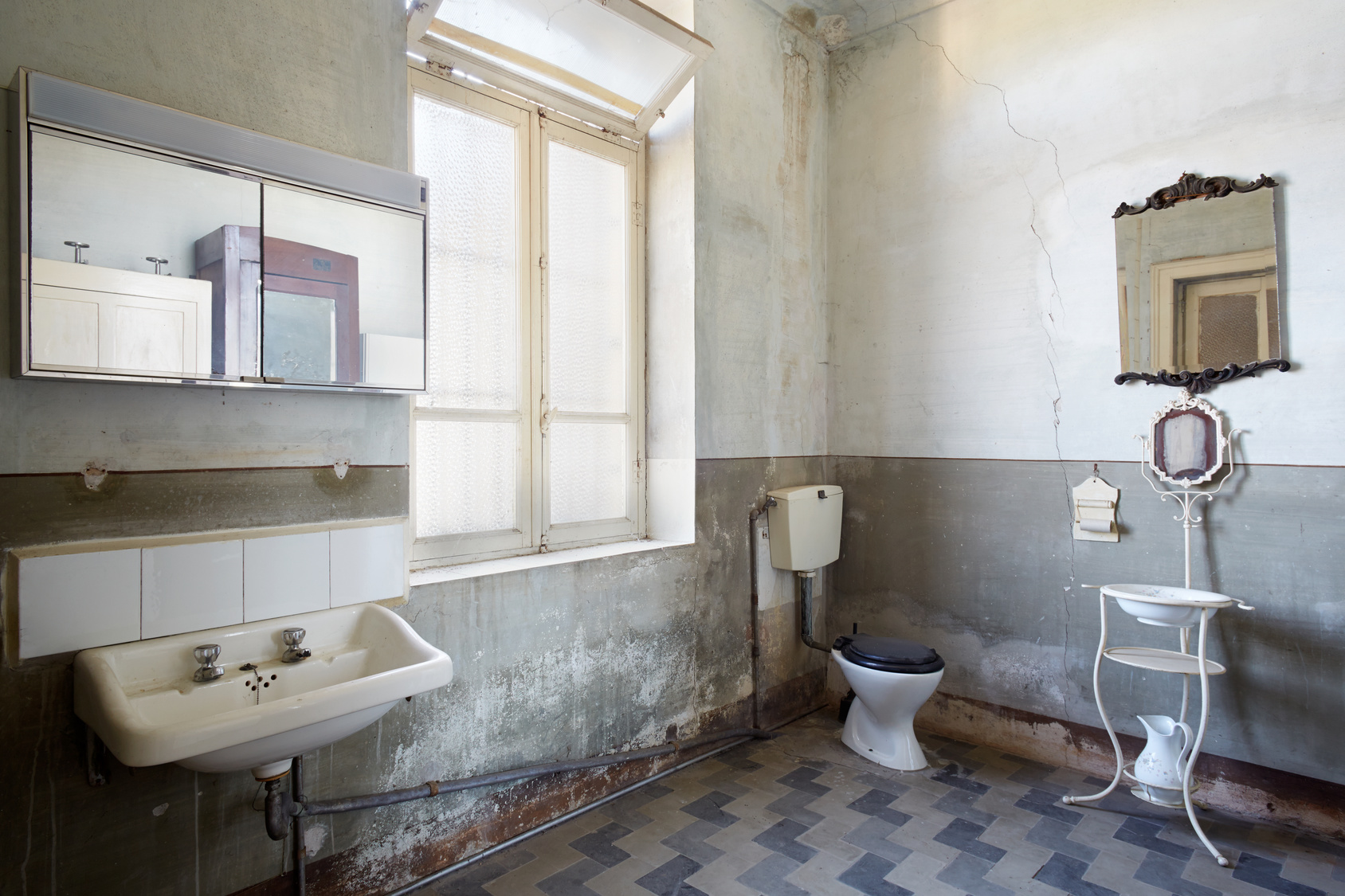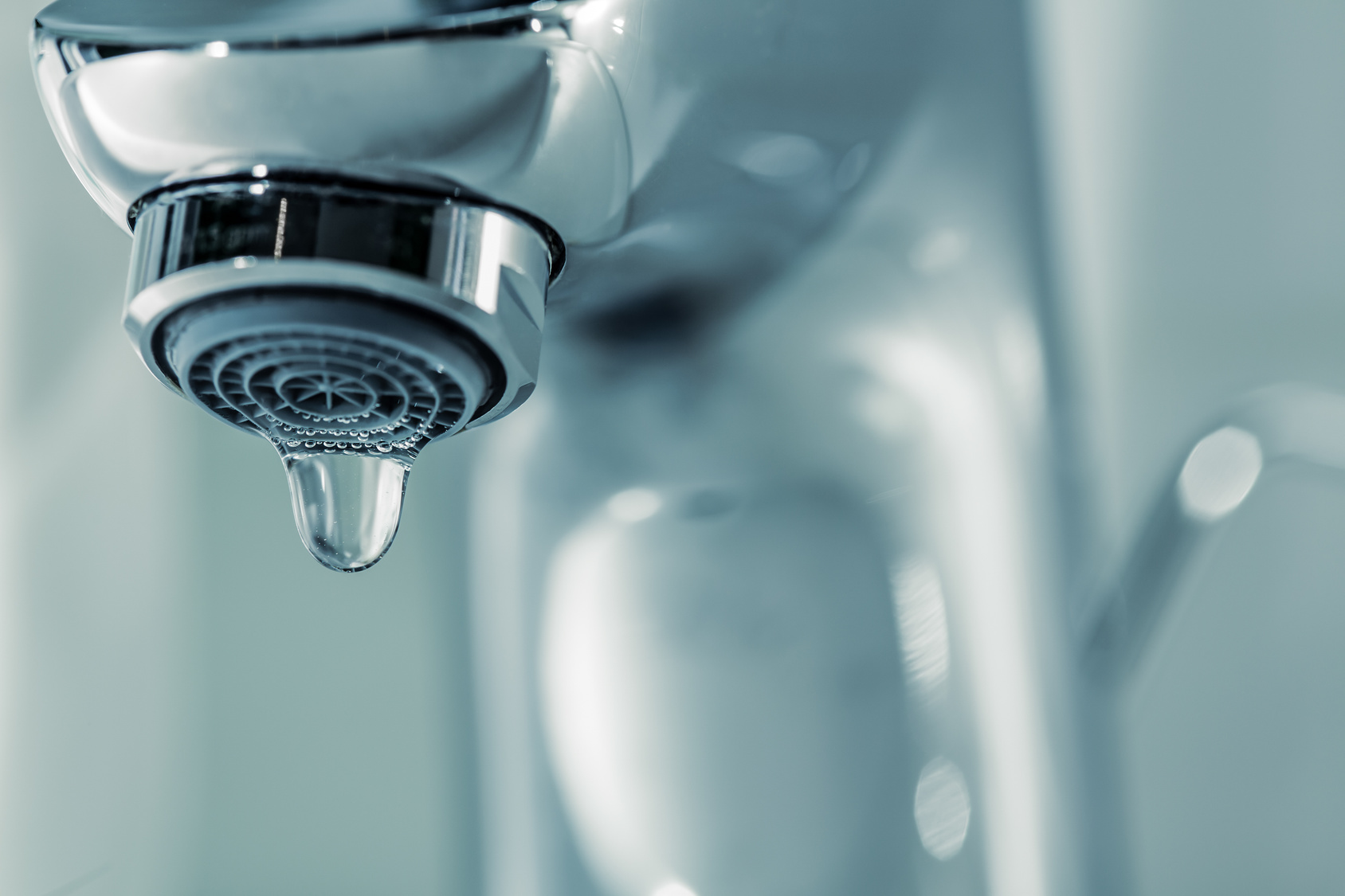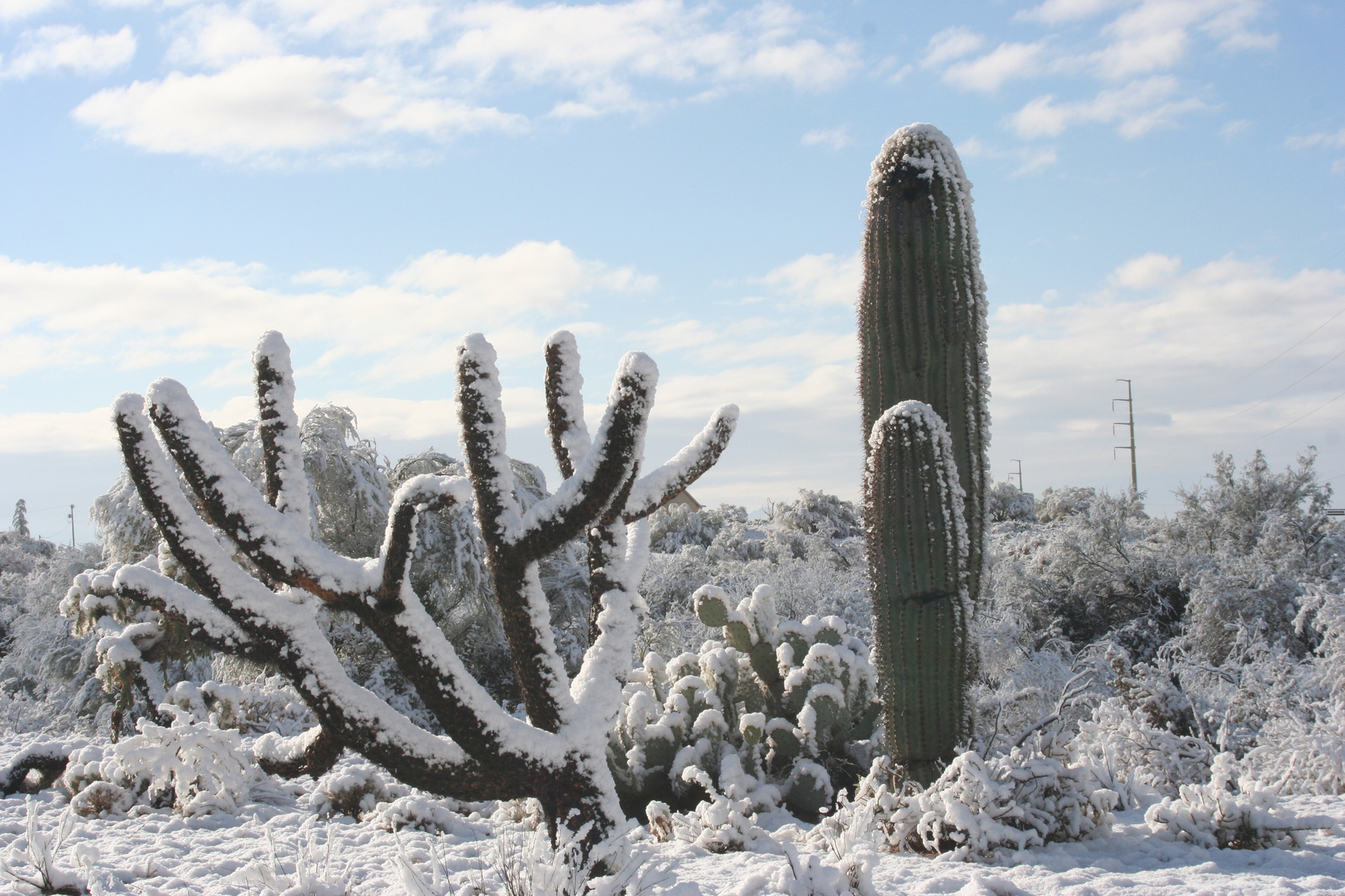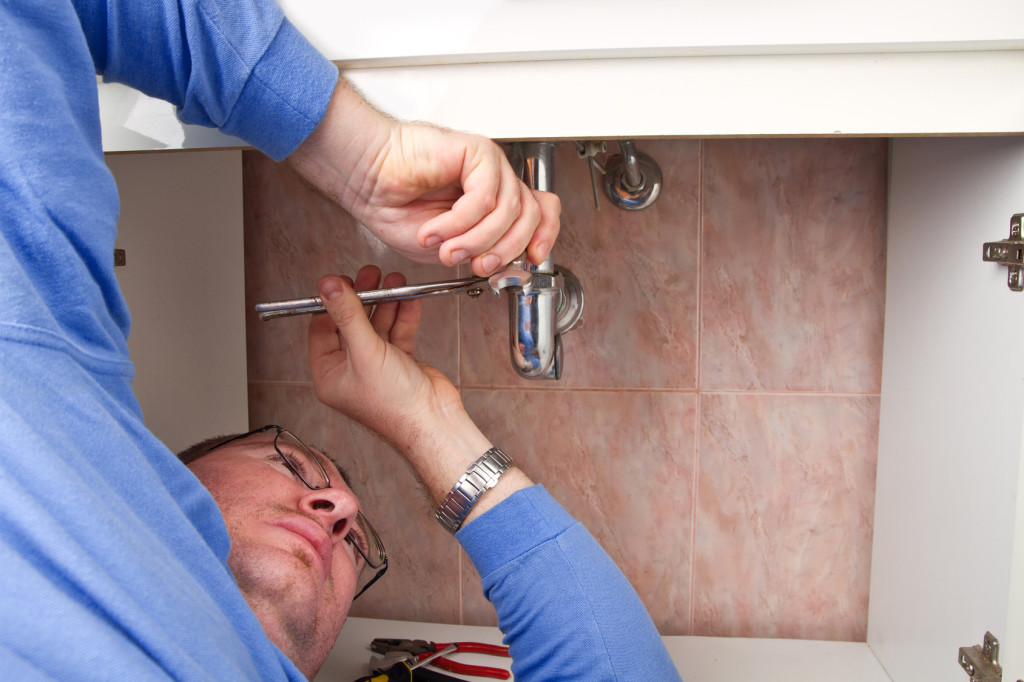
Old bathroom
Is Your Home Old? If the answer is yes, there are some plumbing issues that you should be aware of. That older home of yours can lose a lot of its charm when you are constantly dealing with problems ranging from low water pressure to a backed up sewer. Sometimes the fix can be tricky and time-consuming or expensive if you aren’t able to do the work yourself. Here are some of the usual suspects when it comes to serious plumbing issues in older houses.
Normal Wear and Tear
Like anything in an old house, you have to expect a certain amount of natural deterioration that comes with day to day use over a long period of time. But understand why something happens doesn’t make it any less problematic. Eventually, small leaks can grow into large leaks and can leave you with water damage that will only compound the challenges of maintaining an older home. Relining the pipes is one alternative to completely replumbing the house.
Galvanized Steel Pipes
Older homes are more likely to have galvanized steel pipes rather than plastic or copper pipes that are more common in newer homes that you may want to have inspected. Over time, those older pipes begin to rust and corrode. This affects the performance of water pipes, making them susceptible to water pressure problems and clogs. If you get brown water when you first turn on the faucet that means you have a rust problem. You will want to replace steel pipes to head off any major leaks before they occur and turn your quaint old home into a money pit. Other older materials including clay sewer lines and cast iron drains can pose their own problems.
Plumbing That Has Been Altered Numerous Times
If you have a leak, it may be more difficult to run down the problem in an older home. Odds are previous owners have altered and reconfigured the plumbing in the house several times which can make finding the source of an issue that much more difficult. Eliminating any extraneous pipes can not only cut down on the clutter but can also shorten up the amount of time it takes to react to a plumbing emergency.
Small Vent Pipes
When most older homes were built two-inch vent pipes were the norm. These smaller vent pipes are inadequate to meet the needs of a modern household and can lead to slow drainage, among other problems. Replacing those undersized vent pipes with three-inch pipes will prevent headaches in the future.
Tree Roots in the Sewer Line
Large trees growing in the yard are often part of the allure of an older house at least until the roots start growing into the septic tank or into your slab causing a slab leak. This can cause the sewer to back up, or water line breakage and inflict serious damage on your property. You’ll want to take action the first time you have this issue or you could have a really big problem later.
Noisy Pipes
Your house can sound haunted when old pipes start creaking as they expand and contract. The solution to this problem is fairly easy and inexpensive. By adding some insulation, you can help keep the pipes at a constant temperature and eliminate the noise.
Davis Plumbing & Drain offers plumbing service inspections in older homes. Please call to scheduled yours today.



